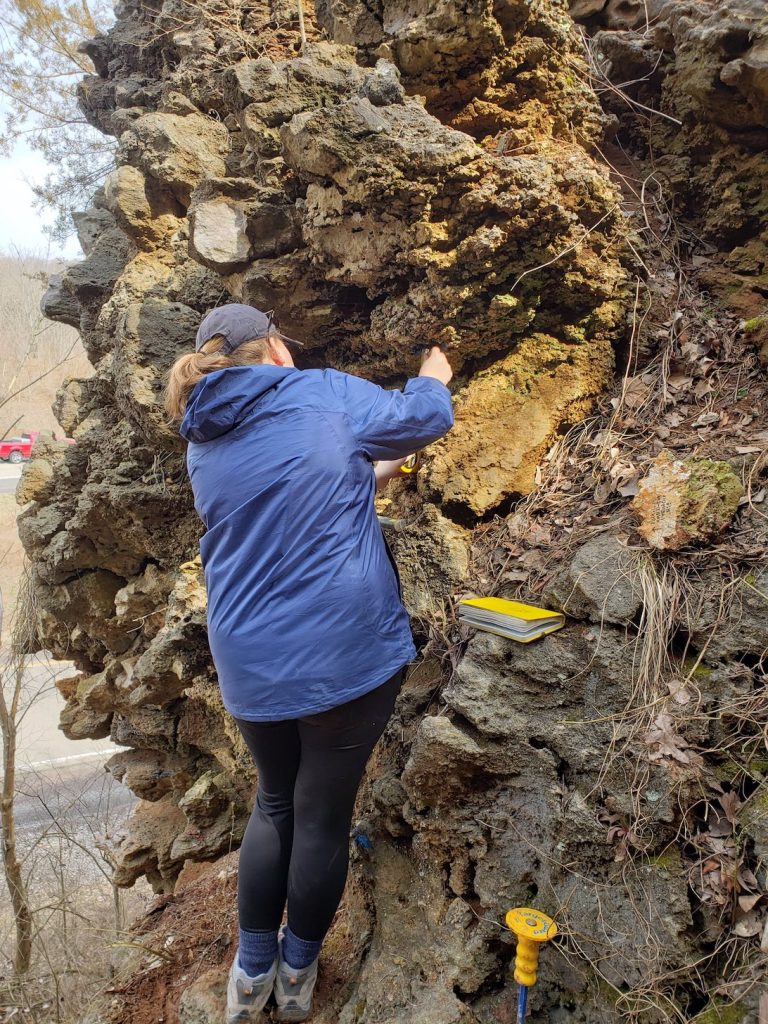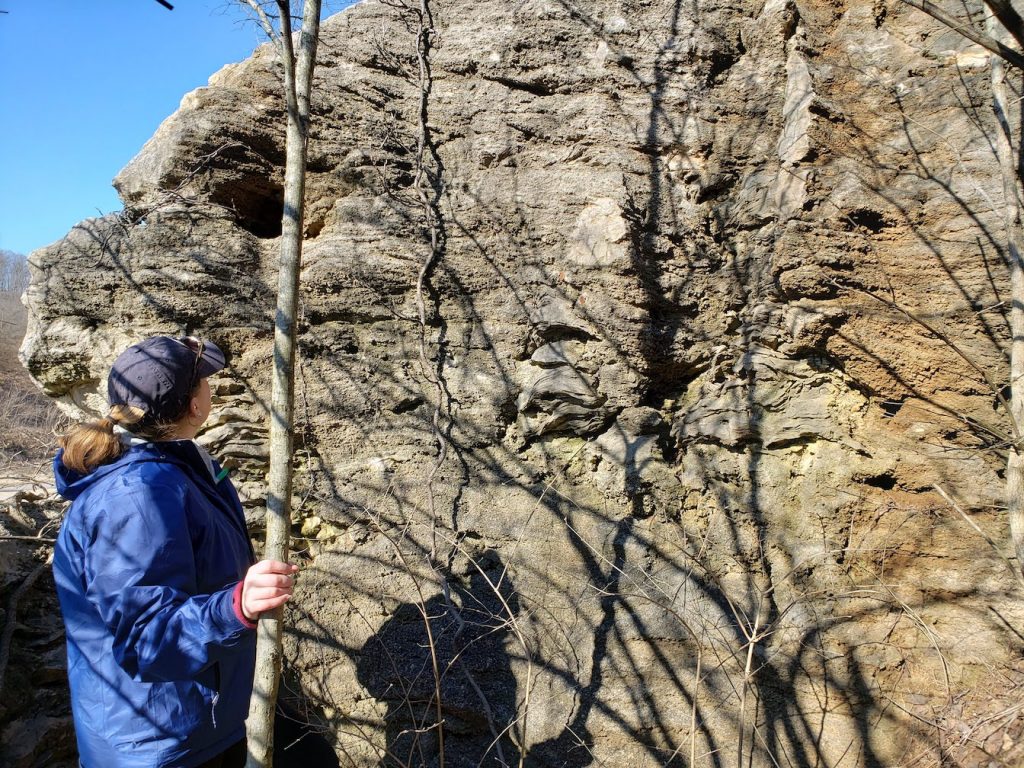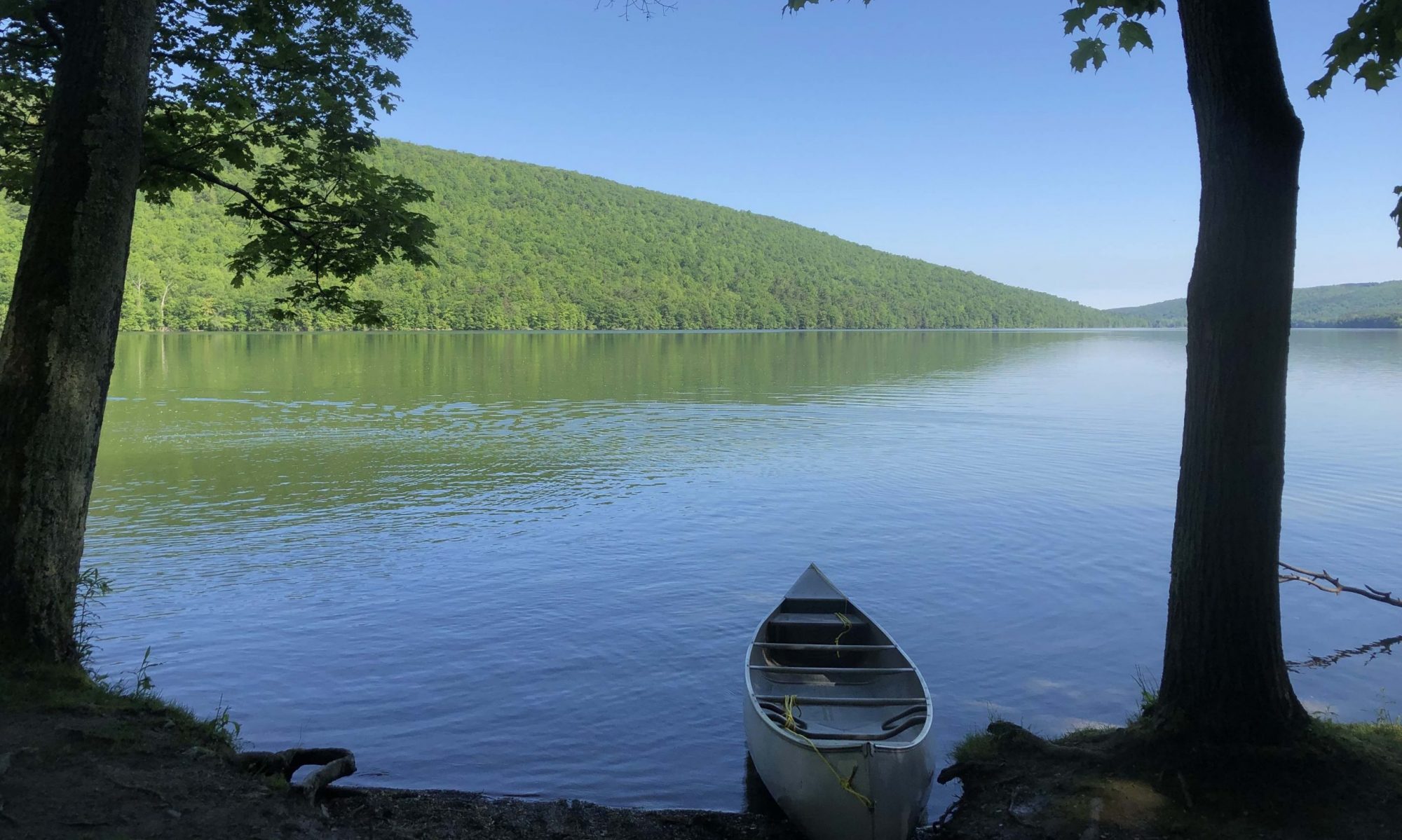My second research area involves the paleoecological analysis of Ordovician reef communities. I worked with one very accomplished undergraduate student, Josie Chiarello, where we assessed an extraordinary stromatoporoid-echinoderm buildup (reef) in east-central Missouri.

This exposure is incredibly unique and unlike any buildup that has been noted in the Ordovician or even in the Paleozoic. The buildup hosts a paleocommunity of encrusting stromatoporoids, cyathocystid edrioasteroids, camerate and cladid crinoids, paracrinoids, edrioblastoids, bryozoans, tabulate and rugose corals, including many taxa that are rare elsewhere. The large buildup displays a vertical succession of encrusting echinoderms intergrown with stromatoporoids and other undetermined binding organisms. This occurrence of a reef-like community provides a unique opportunity to investigate questions of paleoenvironments and ecological interactions during the Late Ordovician and the Great Ordovician Biodiversity Event.

From my multiple field seasons on this outcrop and working with Ms. Chiarello during her honors thesis, the research has expanded into a multi-publication and multi-year project. Ms. Chiarello was a masters student at the University of Cincinnati and this research project developed into a collaborative project with Ms. Chiarello and her advisor, Dr. Carl Brett. Due to the incredibly unique nature of this rare reef community, we are planning to trace the reef community using high-resolution stratigraphy and correlations across the Midwest.
Check out our recent publication of this research:
J.M. Wittmer, C.E. Brett, J. Chiarello, T. Guensburg, G. Darrough, and C.W. Stock “STROMATOPOROID-ECHINODERM ECOLOGICAL SUCCESSIONS IN THE LATE ORDOVICIAN (KATIAN): REEF FACIES AND THE ROLE OF KEY BIOTA IN REEF ARCHITECTURE,” PALAIOS 38(12), 506-526, (5 January 2024). https://doi.org/10.2110/palo.2022.007
